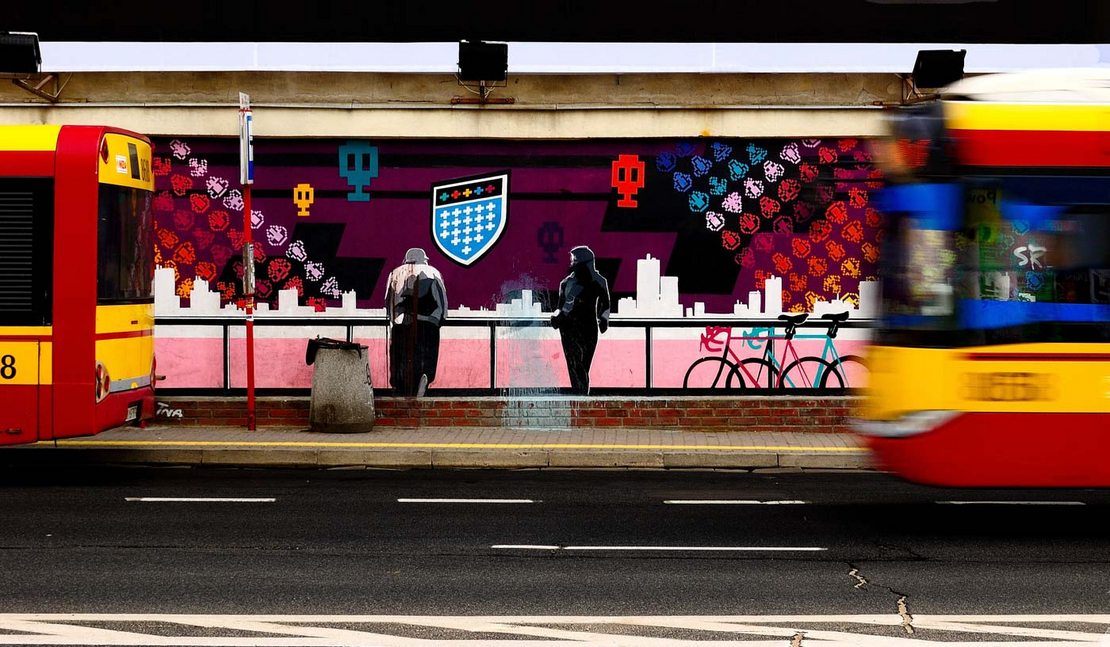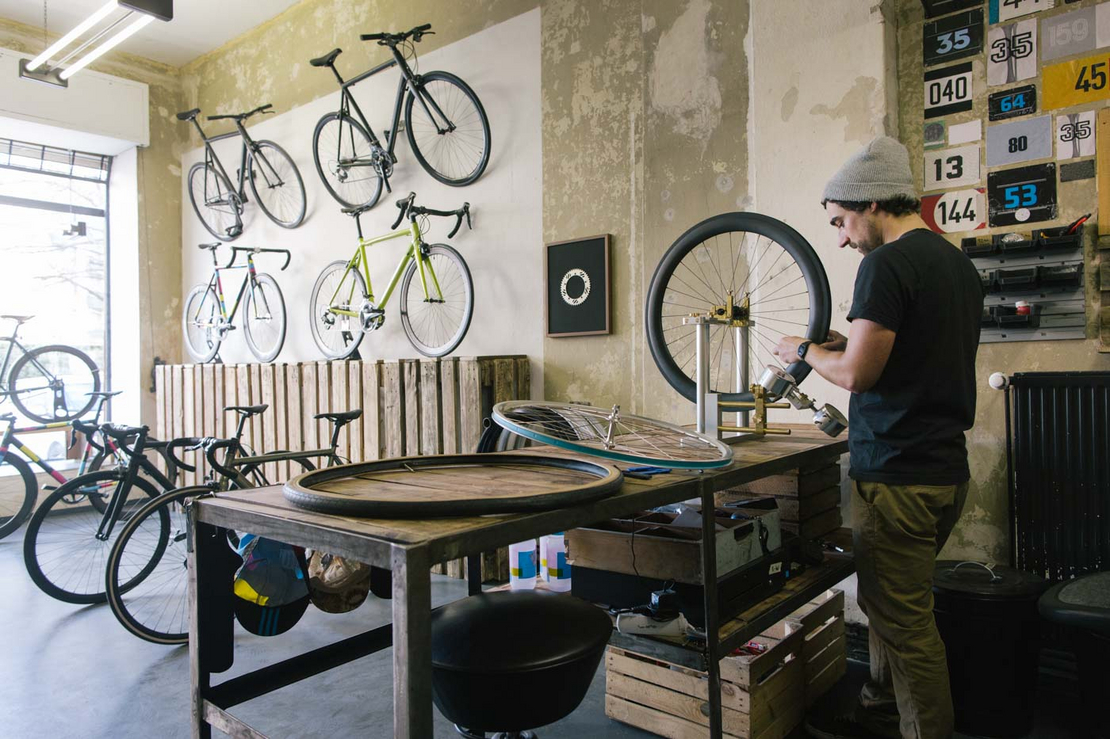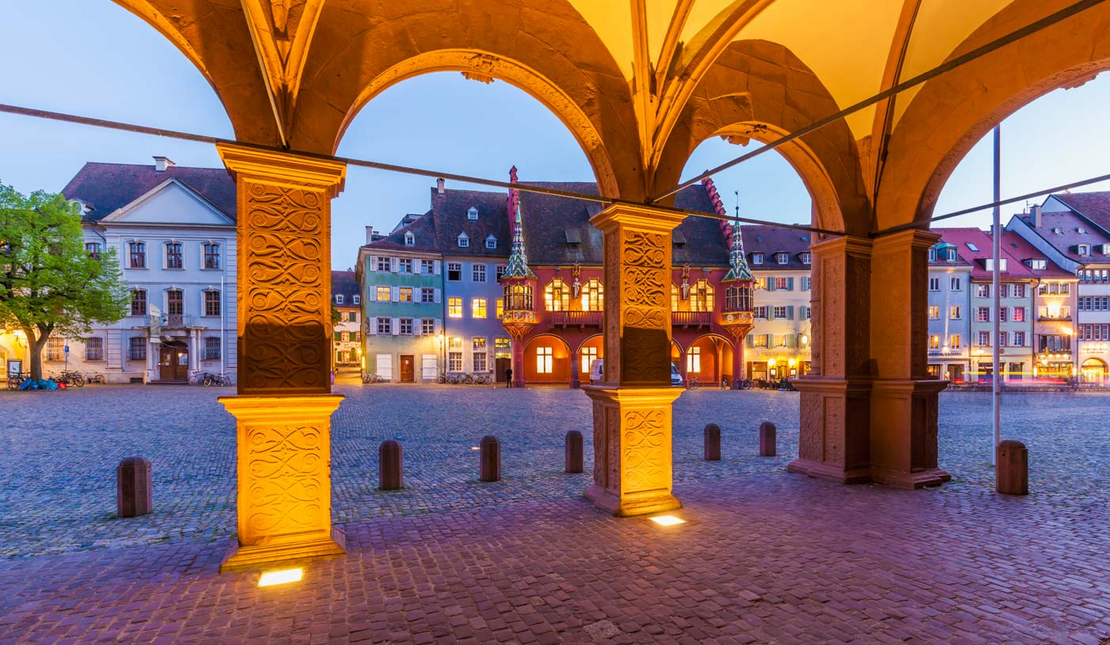Enhancing the internationalisation of Cultural and Creative industry support organisations and enterprises in the Baltic Sea Region and thus fostering growth and employment is the key aim of the Creative Ports project (2019–2021). To this end, the project partners have prepared a set of recommendations targeted at public authorities, decision makers and CCI support organisations. The following 5 themes consist of 26 recommendations that are proposed to foster the internationalisation of the Cultural and Creative industries.
Encourage CCI enterprises to innovate new business models and find new ways to monetise the creative outputs.
Provide tools and support for creating new business models and monetisation strategies through for example workshops, incubator/accelerator programmes, informational events and webinars. Provide business support organisations and CCI intermediaries funding for providing such services.
Acknowledge the importance of co-creation in innovating, creating new and bringing value to stakeholders in both regional and international context.
Support the creation of living labs, stimulating physical and virtual co-creation spaces, fablabs, and hacklabs, among others, in which different players from different industries come together and share information and knowledge. These meeting spaces offer opportunities for the transfer of knowledge and information without the risk of silo-thinking and can aid in innovation processes.
Provide resources for bottom-up initiatives for co-creation. Provide a safety net for CCI actors to prototype different solutions in real life settings and in a safe environment.
Shift to a more open system for co-creation and sharing intellectual property in ecosystems from the current model of royalties and exchanging IPs.
Ensure that the Baltic Sea region’s legal frameworks for intellectual property provide clear contracts that make collaboration in cross-sectoral innovation easier and provide all parties with benefits.
Provide legal facilitation that enables shared ownership and credits for the innovative results of co-creation processes.
Good example:
Creative Commons. Creative Commons provides licenses and public domain tools that give every person and organization in the world a free, simple, and standardized way to grant copyright permissions for creative and academic works, ensure proper attribution, and allow others to copy, distribute and make use of those works.
Ensure adequate support is available for the CCI sector and stimulate new financing opportunities in cultural production.
Ensure funding instruments fit the specifications and needs of the different Cultural and Creative industry sub-sectors.
Ensure the availability of regional funding support for CCIs.
Develop CCI companies’ access to private funding and develop financial instruments to encourage lending and equity investments.
Promote improved capital supply in the CCIs.
Ensure adequate support and information about what funding is available for the CCI sector and stimulate new financing opportunities in cultural production.
7. Make buying from CCI enterprises and giving fair compensation easier
Review national public procurement rules and criteria to analyse whether the process is fair to CCI SMEs and new CCI ventures.
Develop the procurement of public administration to make buying from CCI entrepreneurs easier. Ensure administrative staff have sufficient procurement competencies.
Ensure CCI actors are given fair compensation for giving their expertise, for example when public organisations invite CCI entrepreneurs as experts to network activities.
Establish national recommendations for fair compensation.
Provide internationalisation measures targeted at SMEs.
Establish and develop CCI specific internationalisation programmes and programmes tailored to the needs of different CCI sub-sectors.
Provide internationalisation support that provides CCI entrepreneurs and companies the following: inspiration for new ideas, methods, technologies; networks and contacts; information about new markets (“soft landing”), cooperation partnerships, brand visibility or showcasing of products and services; capacity building for both creative skill and business skills; and peer learning.
Help open doors to new markets through providing, for example, soft landing programmes that assist companies to enter new markets and to explore and connect with new ecosystems.
Provide CCI companies entering foreign markets with information on target market regulations, taxation, legislation, market conditions and other practical information. Facilitate connections between companies and target market country intermediaries who can provide them with practical information.
Facilitate collaboration between micro entrepreneurs and explore collaboration opportunities in internationalisation efforts, such as combined marketing efforts, shared displaying and joint exhibitions.
Create platforms or networks in which micro entrepreneurs can combine their expertise and internationalise together as one.
Good example:
Lean Landing is designed to get small businesses quickly into new European markets. This programme aids in testing whether a company’s products or services can be sold abroad and assists in finding new European partnerships.
Encourage both CCI enterprises and business support organisations/intermediaries to adopt “born global” thinking. This refers to the idea that companies do not have to first succeed in their home market before starting international operations, but internationalisation is built straight into their business model.
Consider the environmental impact of international mobility and export activities.
Consider the ethical ramifications of increasing internationalisation, such as problems associated with outsourcing production to lower cost countries and increasing globalisation.
Create and utilize existing digital tools or virtual ecosystems that allow for supporting internationalisation in order to reduce the carbon footprint of internationalisation activities.
Promote circular design thinking and circular economy solutions in international contexts.
Inform CCI companies about available in-person and digital internationalisation activities and provide support for taking part in these.
Provide education and support for using digital tools that enable building and expanding international networks.
Inform CCI companies about available funding opportunities for internationalisation processes, such as grants, open calls, competitions and other financial support. Help the SMEs to understand the funding programmes.
Develop funding instruments that serve the specific needs of CCI sub-sectors and individual businesses and support their internationalisation.
Ensure the criteria for internationalisation and export support suit the realities of CCI SMEs in order to avoid the threshold for qualification for support being too high for smaller CCI companies.
Internationalisation is a wider concept than mere export and import activities or mobility. Enhancing the state of internationalisation of the CCIs in the Baltic Sea region requires developing international sustainable networks as well as internationalisation specific know-how, skills and capacities.
Enhance national intermediaries’ knowledge of different markets so that they can open doors to new markets for CCI enterprises.
Enhance the knowledge of transnational and international intermediaries (such as cultural institutes, transnational networks (e.g. ARS BALTICA) or NGOs) about specific regional CCI strengths and weaknesses and needs of the industry.
Enhance intermediaries’ capacity to utilise different tools and programmes that support CCI internationalisation.
Enhance intermediaries’ knowledge on local regulations in export target markets, such as tax regulation and legislation.
Good example:
Regional Profiles on Creativeports.eu offer an overview of the Cultural and Creative industries in the various areas in the Baltic Sea region with information about economy, types of support, regional business sectors, knowledge base and skills and about the regional development including references.
Ensure local intermediaries and support organisations are sufficiently connected to their counterparts in other BSR countries and have experience in international collaboration processes.
Enhance cooperation between industry specific and non-industry specific business support organisations and intermediaries at the international level.
Ensure there is funding available for supporting more permanent international linkages.
Good example:
Tandems International networks/organisations, such as national cultural institutes team up with local and regional Business support organisations, public authorities and other CCI stakeholders. These clusters will set up joint events and a network to initiate and support the local CCI Internationalisation.
EU National Institutes for Culture (EUNIC) is a platform for knowledge sharing and for capacity building amongst its members and partners.
Good example:
CCI Secretariat was established as a Contact Desk during the Creative Ports project. Goethe-Institut has committed to keep the Contact Desk functioning for five years post-project by allocating a specific budget for the Contack Desk function. The CCI Secretariat can be reached at info[at]creativeports.eu
Ensure intermediaries and support organisations have sufficient, continuous financial and human resources as well as networks for providing internationalisation services.
Provide resources for developing sophisticated digital solutions for helping CCI enterprises in their internationalisation processes.
Support existing platforms and processes, and create new ones, in which CCI actors can collaborate on joint projects and efforts.
Support the building of communities and the functioning of physical and virtual meeting places for CCI enterprises in order to stimulate collaboration.
Take advantage of collaborating with existing transnational structures, such as EU National Institutes for Culture (EUNIC) and its members, Council of the Baltic Sea States (CBSS), The European Creative Hubs Network, The Northern Dimension Partnership on Culture (NDPC) and Creative Business Network (CBN).
Connect CCI enterprises to regional and international innovation environments.
Build innovation ecosystems with cross-sectoral cooperation based on the quadruple helix model with academia, industry, government, and civil society. This is key to the success of the ecosystems. Bridge together business and cultural sectors to ensure the flow of information and enable collaboration.
Involve and "educate" existing innovation support systems regarding the specific CCI challenges.
Support the building of communities in which the independent CCI players are a part of, where the community creates value together, combines skills and competencies and strengthens the entire community.
Leverage the experiences, knowledge base, expertise and connections of these international cross-sectoral networks.
Ensure both CCI companies and business support organisations have sufficient resources for collaboration.
Provide continuous funding for broker networks and facilitators such as the CCI Secretariat (see Recommendation 15, “Good example”) to ensure they have the required means to operate and support the CCI actors in the BSR region and aid in internationalisation.
Provide funding opportunities for joint projects, innovation camps, creation and running of accessible living labs and co-creation spaces and for creation of new jobs that support these operations.
Provide specific funding for SMEs for experimenting, prototyping and taking part in and creating ecosystems.
Include the Cultural and Creative industries in local, regional and national strategies and programmes either as CCI specific strategies or part of other strategies. Specific strategies work best to enhance the status of the industry.
Include non-economic and qualitative measures (such as impact on the citizens’ well-being and quality of life, social inclusion and innovation) when assessing the impact of the CCI, in a given region.
Implement or develop tools to measure the impact of CCI on the economy and society to further evaluate and demonstrate the impact and value of CCIs at international, national and regional level.
Ensure decision-makers have sufficient understanding of the characteristics of the CCIs and their impact on the economy, job creation, society and culture in order for them to make informed decisions.
Exchange knowledge on CCI strategies, support programmes, good practices and future trends and developments between BSR countries, and at regional level in order to improve regional strategies and support programmes.
Acknowledge the potential Cultural and Creative industries hold for societal and social transformation and innovation and value creation.
Good example:
Baltic Sea States Subregional Co-operation (BSSSC) underlines the importance of the regional level and work to influence the nations within the Baltic Sea Region and the EU institutions when national and European policy in the Baltic Sea Region (BSR) is formulated and implemented. They also focus on the policy area of culture and regional identity.
Ensure cooperation between culture and economy both on policy level and in action.
Ensure links are made between policy makers, leaders and Cultural and Creative industry actors through actions such as information and experience exchange, workshops, learning platforms, group discussions, cooperation projects, advisory boards, and building information exchange platforms.
















